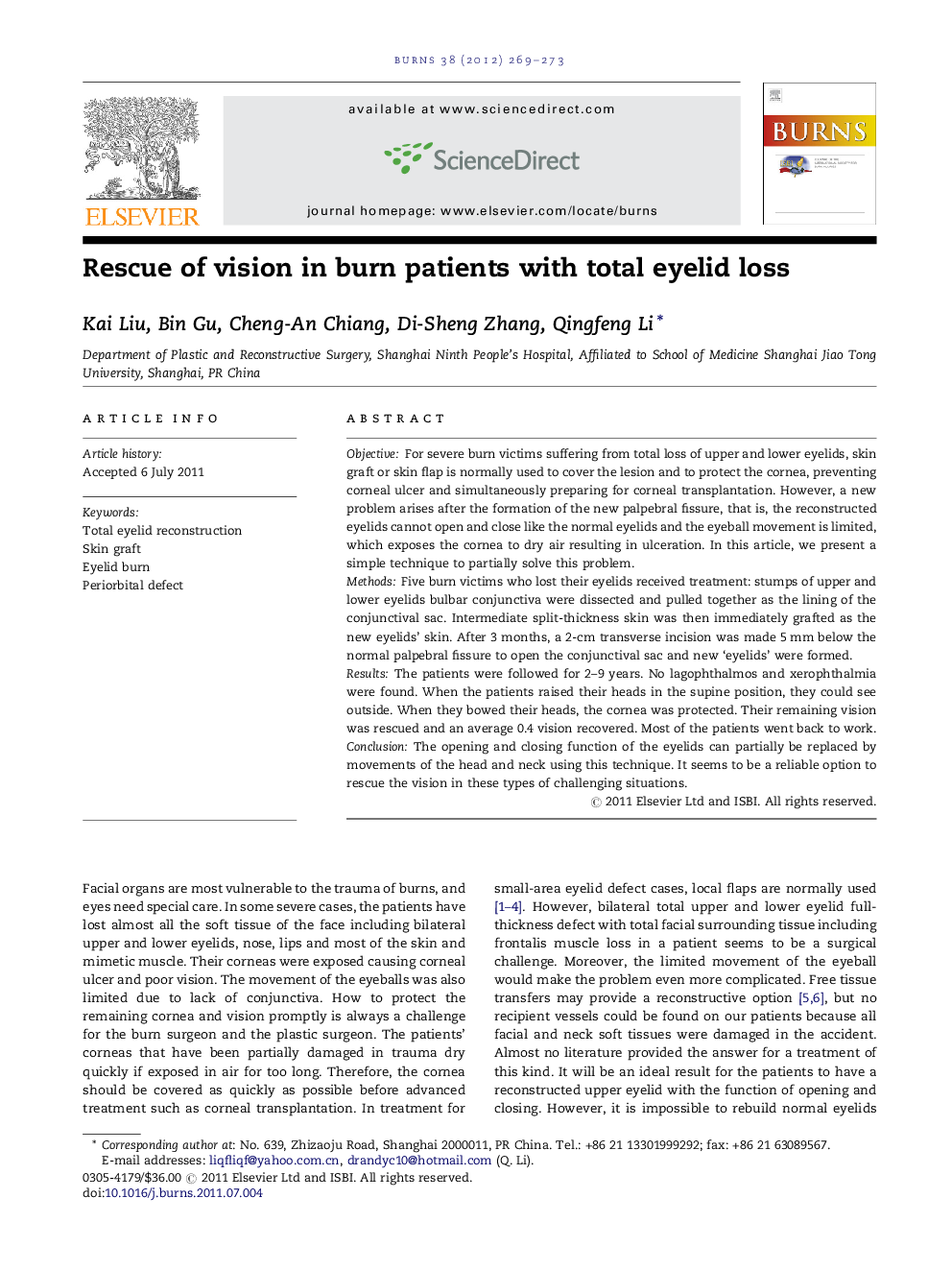| Article ID | Journal | Published Year | Pages | File Type |
|---|---|---|---|---|
| 3105261 | Burns | 2012 | 5 Pages |
ObjectiveFor severe burn victims suffering from total loss of upper and lower eyelids, skin graft or skin flap is normally used to cover the lesion and to protect the cornea, preventing corneal ulcer and simultaneously preparing for corneal transplantation. However, a new problem arises after the formation of the new palpebral fissure, that is, the reconstructed eyelids cannot open and close like the normal eyelids and the eyeball movement is limited, which exposes the cornea to dry air resulting in ulceration. In this article, we present a simple technique to partially solve this problem.MethodsFive burn victims who lost their eyelids received treatment: stumps of upper and lower eyelids bulbar conjunctiva were dissected and pulled together as the lining of the conjunctival sac. Intermediate split-thickness skin was then immediately grafted as the new eyelids’ skin. After 3 months, a 2-cm transverse incision was made 5 mm below the normal palpebral fissure to open the conjunctival sac and new ‘eyelids’ were formed.ResultsThe patients were followed for 2–9 years. No lagophthalmos and xerophthalmia were found. When the patients raised their heads in the supine position, they could see outside. When they bowed their heads, the cornea was protected. Their remaining vision was rescued and an average 0.4 vision recovered. Most of the patients went back to work.ConclusionThe opening and closing function of the eyelids can partially be replaced by movements of the head and neck using this technique. It seems to be a reliable option to rescue the vision in these types of challenging situations.
